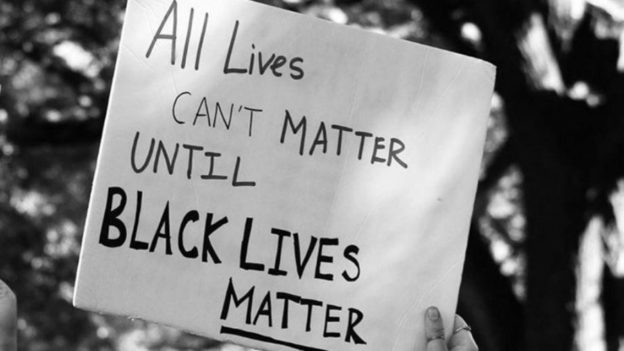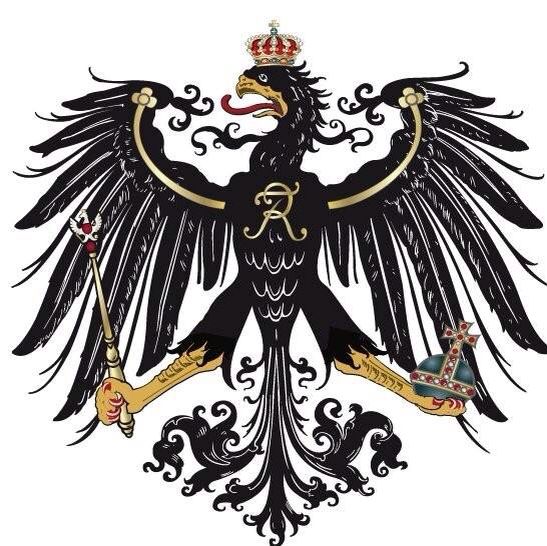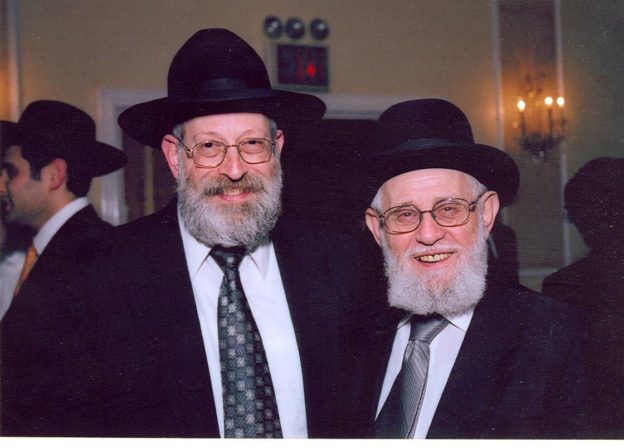An article I wrote for Religion News Service about what New York’s draconian Covid-19 rules affecting Orthodox communities evidence about the rules’ crafters can be read here.


An article I wrote for Religion News Service about what New York’s draconian Covid-19 rules affecting Orthodox communities evidence about the rules’ crafters can be read here.

I have no beef with anyone who wishes to take issue with anything I’ve written. But I do object to the publication of something that blatantly and irresponsibly misrepresents what I have written. Like this recent piece in the Forward, ostensibly responding to an earlier one I wrote in the same medium.
If you read my essay, you will see that nowhere did I argue or insinuate, as Mr. Nosanchuk claims, that that “only Haredi Jewish leaders can speak for our city’s Jewish community.”
Nor does associating me with “violent attacks against journalists” have any respect for truth. In fact, it insults it. I have publicly and repeatedly condemned (in print and on-air) all such behavior, and didn’t reference it at all in my Forward piece, since it was irrelevant to its thesis.
And if Mr. Nosanchuk wishes to attribute to me the claim that Orthodox “practice of Judaism requires an exemption from public-health restrictions,” he really should be required to show where I have ever written such a thing. I have not. What I did write was that New York Governor Cuomo’s recent edicts were illogical and unfair — to any and all houses of worship.
I, further, never insinuated anything remotely like the contention that people should “risk their health or the health of their loved ones by attending a large indoor religious gathering.” Nor would I ever do so.
And I nowhere suggested that non-Orthodox rabbis “have no right to opine on the issue because they interpret Jewish law differently” than I do. I simply noted that non-Orthodox Jews are not hampered as much as Orthodox ones are by Mr. Cuomo’s draconian rules — and that representatives of the former should not call the latter “blasphemous” for standing up for their rights as Americans. The ugliness and falsehood of that accusation was what my article was about – and something Mr. Nosanchuk chose to utterly ignore.
As to his accusation that I align myself “with a small minority within the Haredi community that has flouted public-health restrictions and resorted to violence against fellow Jews who disagree with them.” That is beyond untruth; it is perilously close to libel. He maliciously created it out of whole cloth.
As he did his statement that I have resorted to “claims of antisemitism” against, presumably, the governor. Never have I ever made such a claim, not in my essay, not in any other writings and not in private conversation.
Finally, I didn’t “try” to “spin” the NYJA’s words as name-calling. Its words were name calling, at least if one considers “blasphemous” an insult. I really think most people would.

Dear Subscriber,
“Black Lives Matter” is a phrase that can describe any of a number of groups or an amorphous social movement. Is anti-Semitism pervasive in any of the groups or the movement itself? Are there signs of a healthy response from black public personalities toward Jew-hatred in general? My thoughts on the matter are here.

The United States has long provided fertile ground for all manner of cults and conspiracy theories. QAnon is but the latest and, thanks to the internet and to the respectability bestowed on it by a number of candidates for public office, it has become alarmingly popular.
That popularity is a broad danger in itself. But it should concern Jews in particular, as I note in my Ami Magazine column of last week, which you can read here.

Some recent reading led me to wonder if there might be something about German soil that somehow resonates, in susceptible people, with cruelty and murder? Might the Nazi slogan “Blut und Boden!”—“Blood and Soil!”—hold deeper meaning than mere nationalist dedication to the land?
To read my thoughts on the matter, please visit:
https://www.amimagazine.org/2020/08/12/blood-and-soil/

[photo credit: Rathkopf Photography]
If there were a contest for the most tasteless use of a slogan this summer, it would be hard to pick one out of several recent candidates reacting to New York Governor Andrew Cuomo’s disallowal of overnight camps in the state this year.
Two of the slogans are featured on signs being held by chassidic children in a photo that appeared online and in at least one respectable Jewish print publication. One sign reads “Kids’ Live Matter” [sic] and the other, “No camps, no justice.”
The third was part of a caricature in a Jewish magazine intended for young people. It portrayed Mr. Cuomo dressed as a police officer with his knee holding down a child wearing a summer camp t-shirt and crying out “I can’t breathe.”
What were the creative minds who thought those lines clever thinking? Did they not realize that equating the cruel snuffing out of lives with depriving children of a summer camp experience is obscene?
Please don’t misunderstand. Overnight camps are a very important part of many Jewish children’s lives and educations. Such camps provide some 41,000 young Jews with opportunities to grow physically, emotionally and religiously. Camps are particularly needed this summer, after months of children attending classes remotely and being denied the camaraderie and human interaction so vital for human development.
I fully realize that. And also that Mr. Cuomo’s edict was woefully wrongheaded.
He ignored a 17-page safety plan provided to him by a consortium of Orthodox Jewish overnight camps, signed by no less than nine nationally-recognized infectious disease doctors and medical professionals. It explained how precautions could be taken at overnight camps to minimize, if not eliminate, the risk of Covid-19 infections. The experts contended that children in camp environments would actually be safer in the protective bubble of isolated camps than they will now be if the edict stands.
But the cogent case for overnight camps doesn’t deserve to be sullied by outrageous, offensive comparisons.
Did the sloganeers consider for a moment how a black citizen, anguished by the seemingly endless parade of killings of unarmed black men and women by police, would perceive the “borrowing” of chants used to protest such carnage in the cause of demanding that… summer camps be opened?
Leave aside how a black American would feel. How should any thoughtful person feel?
And if it’s really necessary to bring the issue closer to home, how would any of us Jews feel if “Never Again!” was co-opted to describe some summer vacation resort’s pledge to not ever repeat the same entertainment experience? No need to even imagine. Just recall the howls of Jewish outrage last summer when Representative Alexandria Ocasio-Cortez referred (not even inaccurately) to detention facilities on the southern border as “concentration camps.”
More disturbing than the tone deafness of the offensive borrowings is the lack of empathy it reveals.
The Torah teaches us to treat our fellow Jews in special ways. We are family, after all, and family comes first.
But is the concept of tzelem Elokim limited to Jews? Does the word brios in mechabed es habrios (Avos, 4:1) not, on its face, mean all people? Did Dovid HaMelech not mean to include all human beings when he sang (Tehillim, 65:3) “You, Who hears prayer, to You all flesh will come”? Were korbanos not accepted from non-Jews in the Beis HaMikdash?
Is “darkei shalom,” for some reason, a lesser halachic ideal than others? Is not the goal of history, as our nevi’im prophesied, to bring all the earth’s inhabitants to recognize Hashem? Do we not then have to be concerned about them?
Back in 1964, Dr. Marvin Schick, a”h, writing in The Jewish Observer, asserted:
“It is our historical and religious heritage that compels us to sympathize with the plight of the Negro. It is unthinkable that a people so oppressed throughout history would not today rally to support the cause of the American Negro, now afflicted by the irrational forces of hatred and bigotry. Anything short of this by American Orthodox Jewry is to reject the principles that we have stood by through the millennia of persecution and to which we must remain equally faithful in a free society.”
Yes, there has been hatred for Jews among some blacks. I can testify to that from personal experience. Many experiences, in fact.
But I have also had enough interactions with black citizens of good will to know that the haters aren’t the norm. And all of us have witnessed more than enough in current events to know that being black in America remains a difficult, even dangerous, thing.
“Black Lives Matter” is a name that has been adopted by scores of organizations, some larger, most smaller. But Black Lives Matter is also an idea — essentially a reiteration of what was once known as the “civil rights movement.” That movement qua movement, as Dr. Schick wrote more than 50 years ago, is one that should resonate with us.
The concept of darkei shalom, if nothing else, should compel us to show black Americans, and all people, that Jews committed to living Torah-faithful lives are fully committed to the safety and equal treatment by society of all human beings, no matter the color of their skins.
© 2020 Rabbi Avi Shafran

A piece I wrote about my father, a”h, and one of many life lessons he taught me was published by Fox News today. It can be accessed here.

As sad as it is ironic, those who have seized the opportunity during protests over the killing of George Floyd to vandalize police vehicles and attack officers, deface buildings and loot stores are perpetuating racism.
Because, by their actions, they effectively reinforce the prejudices of people who view people of color as unbridled and lawless. Instead of images of black or brown scientists, doctors, lawyers, teachers or social workers, what the face of a nonwhite person conjures in their minds is a threat.
That’s what was perceived by the white woman who was firmly perched at the precipice of the news cycle until the killing of Mr. Floyd pushed her off. A black man who was bird-watching in New York’s Central Park politely asked her to restrain her unleashed dog and she responded by calling police, claiming that an “African-American” was threatening her. His words “Look, if you’re going to do what you want, I’m going to do what I want, but you’re not going to like it” probably wouldn’t have struck her as threatening had the bird watcher been Caucasian.
But he wasn’t and so they did.
And the looters of late have only empowered such prejudice. Of, course, thugs don’t give a first, much less second, thought to the impact of their actions on others. Their only concern is about what good stuff they might grab from violated stores. How unfortunate, though, that the national conversations about racial injustice and police misconduct have again been marred by mindless marauders.
As it happens, it wasn’t only on American streets that roguery reigned. As always these days, when chaos and stupidity blossom, the noxious pollen of Jew-hatred is released across the internet, particularly on social media.
And so it is that we have, on Twitter, a man (whose identifying graphic is a Hebrew declaration of fealty to Christianity) proclaiming that “Jewish whites were the most prolific slave owners in history. They practically created slavery in America,” and concluding that shuls are “free game” for vandalism.
Aside from his hogwash “history,” his conclusion is, to put it delicately, illogical. It takes a twisted mind to invoke something that didn’t happen in order to vilify distant descendants of those who didn’t do it.
There was further lunatic logic, too, from another Twitter twit, who explained that “Jewish Americans hold all the power in the country, thus you cannot be racist or anti-Semitic towards them.”
So, you see, since many Jews have been successful in their professions, in the public sphere and in public service, hatred and harm can be directed against them.
Interestingly, falsehoods propagated by social media became a recent major news item, too, right alongside the killing of George Floyd and its aftermath.
Twitter took the unprecedented step of placing a fact-check notice on a tweet by President Trump in which he asserted that mail-in ballots lead to voter fraud. The notice directed followers of the president’s tweets to a site offering facts showing otherwise.
And then, a day later, the social media company put a warning label on what it regarded as the president’s threat against protestors in Minneapolis, his tweet that “when the looting starts, the shooting starts” — a sentence that has been used by racists in the past and that, Twitter said, “violates our policies regarding the glorification of violence [because of the sentence’s]… historical context… its connection to violence, and the risk it could inspire similar actions today.”
In response, Mr. Trump accused Twitter of bias against him, and issued an executive order aimed at removing Section 230 of the Communications Decency Act, a move could change the status of social media giants from “platforms,” which absolves them of responsibility for things posted on them, to the equivalent of newspapers, leaving them open to lawsuits over anyone’s postings.
Although it’s safe to say that it wasn’t Mr. Trump’s intent, removing Section 230 would likely force the social media giants to disallow him to post on them — entailing a loss of eyeballs they will be anguished to suffer — and open the door for decentralized, under-the-radar alternatives to take their place. Some of those alternatives will be more than happy to host the president.
And they will be happy, too, to host people seeking to destabilize society. The Wall Street Journal recently reported that Facebook hid a study it undertook that found that its algorithms exacerbate polarization — that 64% of all extremist group ‘joins’ produced by the platform “are due to our recommendation tools.”
And so, if Twitter’s attempts to correct misinformation is effectively undermined, we can expect a slew of new “post what you will” platforms that will become newly popular and eagerly employed by the always-ready-to-pounce anti-Semites on the extremes of the political spectrum.
Such actors will be itching to spread canards about Jews and to encourage violence against them. As itching as amoral rioters are to steal sneakers and luxury goods.
© 2020 Rabbi Avi Shafran

An article I wrote about the media’s obsession with Haredim who flout norms, and what it shows — about the media, not Haredim — is here.

It’s been some 700 years since the bubonic plague ravaged central Asia, killing millions of people. A decade or two later, in October, 1347, a ship from the Crimea docked in Messina, Sicily. Rats in its hold were infested with fleas that harbored the bacterium that causes the sickness.
That marked the beginning of the era known as the Black Death. Over the next 50 years, it is estimated that at least 25 million people died, between 25% and 60% of the continent’s population.
Yes, that disaster is recalled here because of the coronavirus, or Covid-19, currently spreading around the world. Not, though, in order to raise great alarm, because, at least at this point, it is not warranted. Rather to note, firstly, the stark contrasts between the bubonic plague and the current viral outbreak; secondly, to remind readers of the Jewish angle of the Black Death years; and, thirdly, to convey a lesson from that plague to the current medical challenge.
The contrast lies in several things. For starters, no one at the time of the Black Plague had any idea of what was causing it. At a time of deep ignorance, fueled by Christian lore and superstition, all sorts of theories abounded, none of which did anything to slow the disease. Today, we know what is causing the current pandemic, and, hopefully, modern science can develop the means of protecting the vulnerable from the Covid19 virus’ worst effects.
And, unlike the bubonic plague, baruch Hashem, Covid-19 does not harm the vast majority of those who contract it. It is particularly dangerous to the elderly and infirm, and to smokers and others with less than optimum lung function. But to most people not in any of those categories, the infection results in either no symptoms at all or in flu-like experiences – fever, cough and headache.
Finally, as the eminent and wonderfully readable late historian Barbara Tuchman recounted in her book A Distant Mirror, the Middle Ages plague brought people to turn on one another rather than work together to deal with the challenge.
Christian religious leaders abandoned their flocks, parents deserted children; and children, their parents. “Charity,” she wrote, “was dead.”
Today, nations and scientists and health workers are working hard to educate people about the current virus, to create a vaccine against it and to find the most effective therapies for the stricken, if not an actual cure. People might be quarantined, for their or others’ benefit, but no one is being deserted.
The Jewish angle to the Black Death was the pointing (as usual) of fingers of blame at our forebears.
The plague, it was widely declared, was punishment for Christian society’s allowing Jews to live in their midst as Jews. Although Jews, too, perished in the plague, only in much smaller numbers, it was said. The resulting “logic” had it that ending the epidemic lay in converting, exiling or murdering Jews. Despite the declarations of several popes that the Jews were not at fault for the plague, people on the street were sure they knew better.
Then the populace came up with a better reason to blame Jews – the stubborn rejecters of Christianity were poisoning the drinking wells of communities, the better to harm Christians. Some Jews even confessed to such crimes – after being forced to do so in order to end their horrific torture.
On February 14, 1349, a day on which Christians venerate a third-century clergyman named Valentine, a contemporary observer of events recorded, some 2000 Jews were forced onto a wooden platform in the Holy Roman Empire city of Strasbourg’s Jewish cemetery and burned to death. Parents held tightly to their children when citizens tried to take them away for baptism.
The Jewish communities in Antwerp and Brussels were entirely exterminated in 1350. From 1349 until about 1390, the Jewish communities of France and Germany were decimated by angry mobs. In 1350, Frankfurt had over 19,000 Jews. By 1400, not a minyan was left.
Historians tend to take seriously the contention that Jewish communities were less affected by the plague itself, if not from the hatred it unleashed. And that brings us to the lesson to be learned from events seven centuries in the past.
The ostensible reason that the Black Death may have affected Jews to a lesser degree than Christians lies, the historical consensus has it, in the fact that Jews frequently wash their hands.
Upon arising in the morning, before tefillos, before saying Asher Yatzar, before bread meals (which were most, if not all, meals over most of history), Jews poured water over their hands. And, what’s more, they bathed – a luxury back in the Middle Ages – every week in honor of Shabbos.
We Jews still wash our hands a lot. But today most of us live in environments where every doorknob, subway pole and bus passenger is a vector for the transmission of germs.
Although it is likely that the spread of Covid-19 will intensify before it, b’ezras Hashem, soon, abates, we would do well, especially the elderly and health-compromised among us, to do the equivalent of netilas yadayim through the day, ideally, thoroughly and with soap.
That will not only help protect us from the current and other infections, but be a worthy reminder of the mesirus nefesh of, and kiddush Hashem created by, our ancestors in Europe.
© 2020 Hamodia